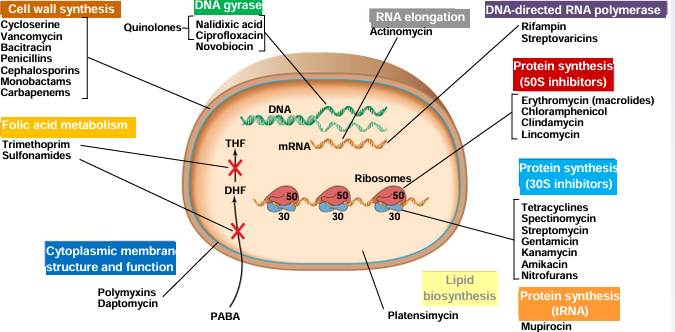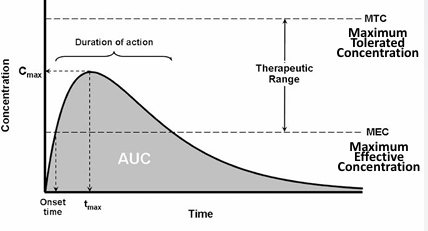bacterial growth control
1/29
There's no tags or description
Looks like no tags are added yet.
Name | Mastery | Learn | Test | Matching | Spaced |
|---|
No study sessions yet.
30 Terms
thermal death point
the minimal temperature at which all organisms are killed in a particular liquid
thermal death time
the minimal time required to kill all bacteria in a particular liquid at a given temperature
types of heat for bacterial control
moist heat (boiling water/ autoclave)
dry heat
pasturisation (mild heat/ HTST/ UHT)
ionising radiation
food industry
medical and lab equipment
DNA destruction by breaking double strands and ROS
non-ionising radiation
surface decontamination
DNA damage (breaks/dimers)
filtration
used to sterilise gases or liquids that can be damaged by heat
the porosity of filters can be chosen for specific applications
nucleopore, membrane and depth filter
chemical antimicrobial control
effect on growth: bacteriostatic, bactericidal and bacteriolytic agents

sterilant
completely eliminating or destroying all forms of microorganisms, including spores
disinfectants
kill microorgansisms but not necessarily endospores
antiseptics and germicides
inhibit growth or kill microorganisms
disc diffusion technique and spot assays
What are the disc diffusion technique and spot assays?
The disc diffusion technique is a method used to determine the susceptibility of bacteria to antimicrobial agents. This technique involves placing filter paper discs soaked in antibiotics on an agar plate inoculated with the bacteria. After incubation, the effectiveness of the antibiotics is determined by measuring the diameter of the inhibition zone around each disc.
Spot assaysinvolve applying small volumes of different solutions containing potential antimicrobial agents directly onto an agar surface that has been inoculated with bacteria. This method allows for the quick assessment of the effectiveness of multiple agents by observing the growth inhibition in the spots.
minimum inhibitory concentration (MIC)
the lowest concentration of a drug inhibiting the visible growth of a test organism after overnight incubation
minimum bactericidal concentration (MBC)
the lowest concentration of a drug killing >99.9% of a test organism after overnight incubation
phenolic compounds
first used in 1867
aromatic derivatives (originally used to control odour in sewage)
local anaesthetic at low concentration
antibacterial (but toxic) at high concentration: disrupts cytoplasmic membrane, denature proteins
alcohols
denature proteins
lipid solvent
disrupting cytoplasmic membrane
active concentration between 60-85%
aldehydes
alkylating agents
modifies proteins and DNA causing cell death
quaternary ammonium compounds
interacts with phospholipids of the cytoplasmic membrane (cationic agents)
halogen releasing agents: 2 types
chlorine-releasing agents: sodium hypochlorite (house bleach), formation of chlorinated bases in DNA → oxidation of proteins
iodine-releasing agents (iodine/iodophors): very powerful, but stain. Target DNA and proteins
history
louis pasteur (1822-1895): formally demonstrated the theory of germs
robert koch: established the casual relationship between a microbe and a disease
koch’ postulate
the microorganism must be found in all organisms suffering from the disease, but not in healthy organisms
the microorganisms must be isolated from a diseased organism and grown in pure culture
the cultured microorganism should cause disease when introduced into a healthy organism
the microorganism must be reisolated from the inoculated, diseased experimental host and identified as being identical to the original specifc causative agent
the major classes of antibiotics

4 ways bacteria resist antibiotics
drug inactivation
target modification
efflux/ impermeability
bypass
what causes antibiotic resistance
antibiotic misuse in human theraputics
farming (animals fed with antibiotcs at subtheraputic doses)
agriculture: treatment of diseases in trees and plants
aquaculture
pets

what are the properties of an ideal antibiotic
target: selective toxicity and must inhibit an essential process/ virulence
stability and effectiveness: pharmacokinetics and pharmacodynamics
cost
beta-lactams
beta-lactams inhibits peptidoglycan polymerisation mediated by D, D-transpeptidases
beta-lactams are structural analogs of D-Ala-D-Ala-C terminal residues in the peotide stem
they are used by PBP as substrates and inactivate these enzymes irreversibly
resistance to beta-lactams
beta-lactamases
low affinity PBPs/overexpression
efflux systems (gram negative bacteria)
alternative pathways